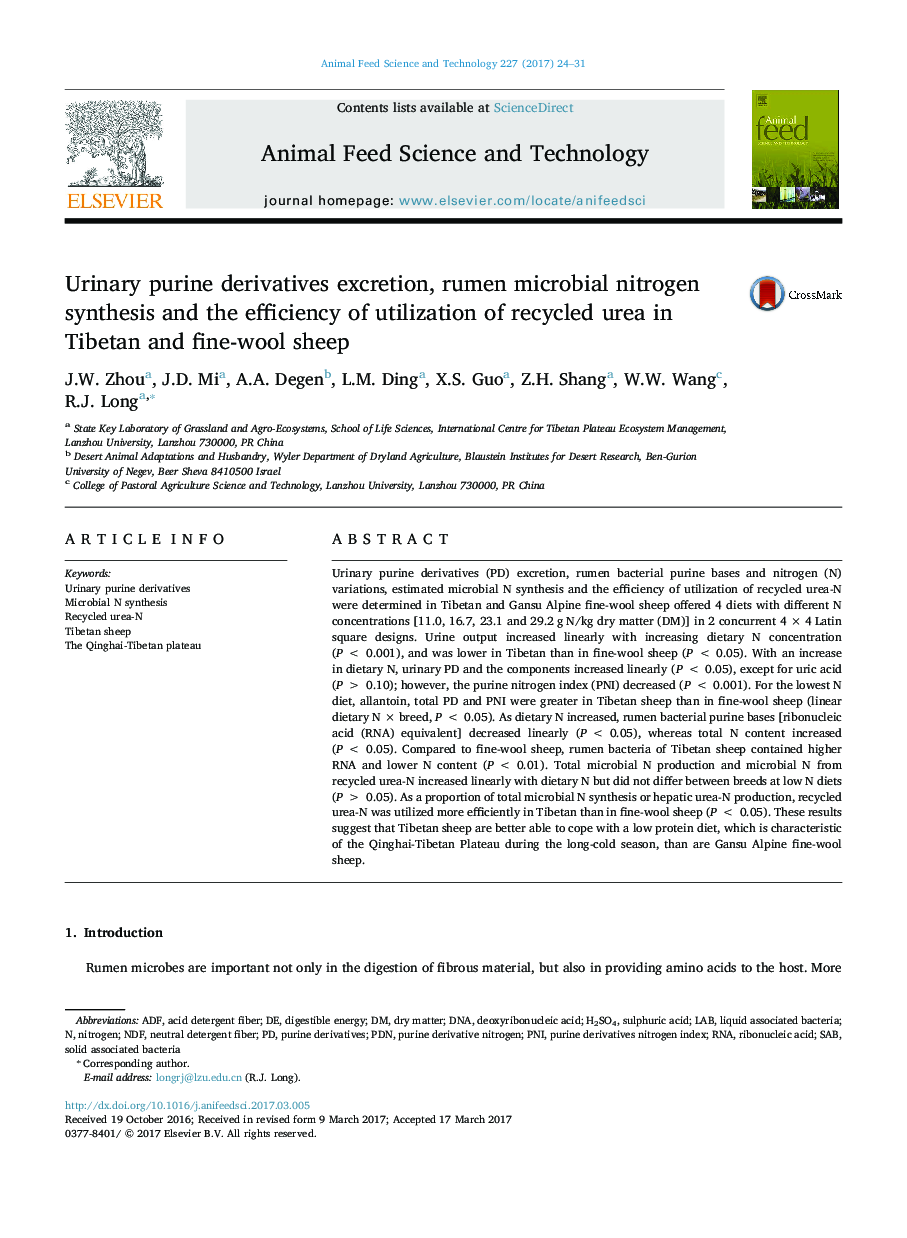| Article ID | Journal | Published Year | Pages | File Type |
|---|---|---|---|---|
| 5538734 | Animal Feed Science and Technology | 2017 | 8 Pages |
Abstract
Urinary purine derivatives (PD) excretion, rumen bacterial purine bases and nitrogen (N) variations, estimated microbial N synthesis and the efficiency of utilization of recycled urea-N were determined in Tibetan and Gansu Alpine fine-wool sheep offered 4 diets with different N concentrations [11.0, 16.7, 23.1 and 29.2 g N/kg dry matter (DM)] in 2 concurrent 4 Ã 4 Latin square designs. Urine output increased linearly with increasing dietary N concentration (P < 0.001), and was lower in Tibetan than in fine-wool sheep (P < 0.05). With an increase in dietary N, urinary PD and the components increased linearly (P < 0.05), except for uric acid (P > 0.10); however, the purine nitrogen index (PNI) decreased (P < 0.001). For the lowest N diet, allantoin, total PD and PNI were greater in Tibetan sheep than in fine-wool sheep (linear dietary N Ã breed, P < 0.05). As dietary N increased, rumen bacterial purine bases [ribonucleic acid (RNA) equivalent] decreased linearly (P < 0.05), whereas total N content increased (P < 0.05). Compared to fine-wool sheep, rumen bacteria of Tibetan sheep contained higher RNA and lower N content (P < 0.01). Total microbial N production and microbial N from recycled urea-N increased linearly with dietary N but did not differ between breeds at low N diets (P > 0.05). As a proportion of total microbial N synthesis or hepatic urea-N production, recycled urea-N was utilized more efficiently in Tibetan than in fine-wool sheep (P < 0.05). These results suggest that Tibetan sheep are better able to cope with a low protein diet, which is characteristic of the Qinghai-Tibetan Plateau during the long-cold season, than are Gansu Alpine fine-wool sheep.
Keywords
Related Topics
Life Sciences
Agricultural and Biological Sciences
Animal Science and Zoology
Authors
J.W. Zhou, J.D. Mi, A.A. Degen, L.M. Ding, X.S. Guo, Z.H. Shang, W.W. Wang, R.J. Long,
